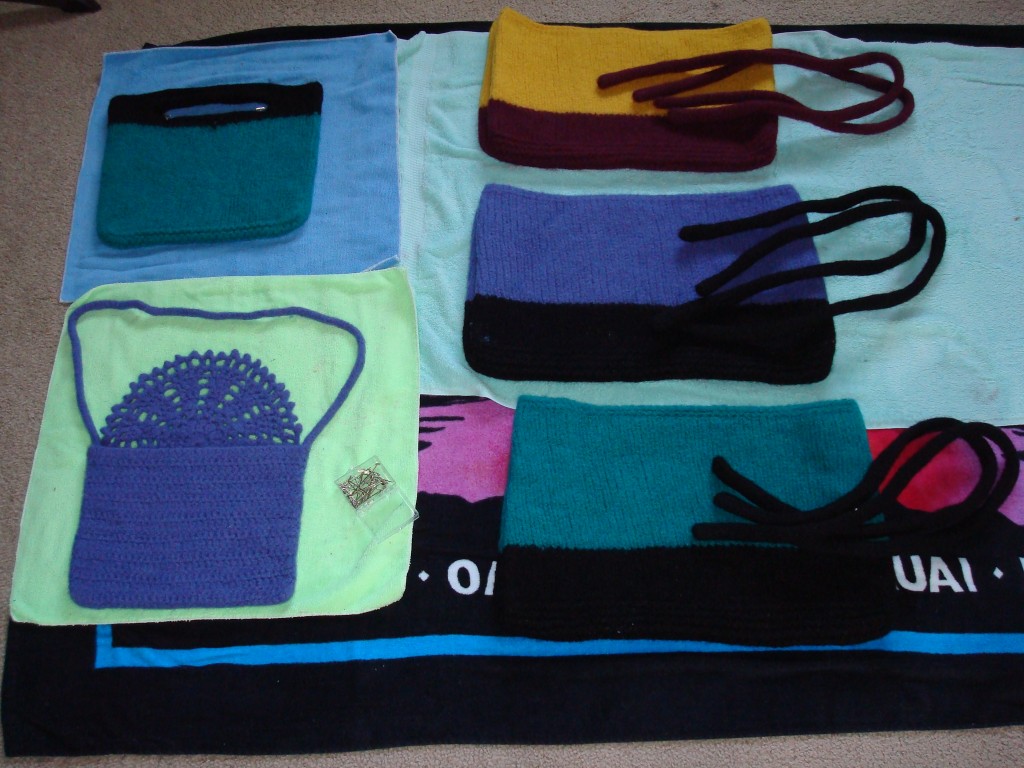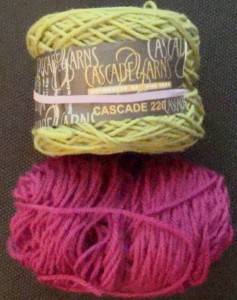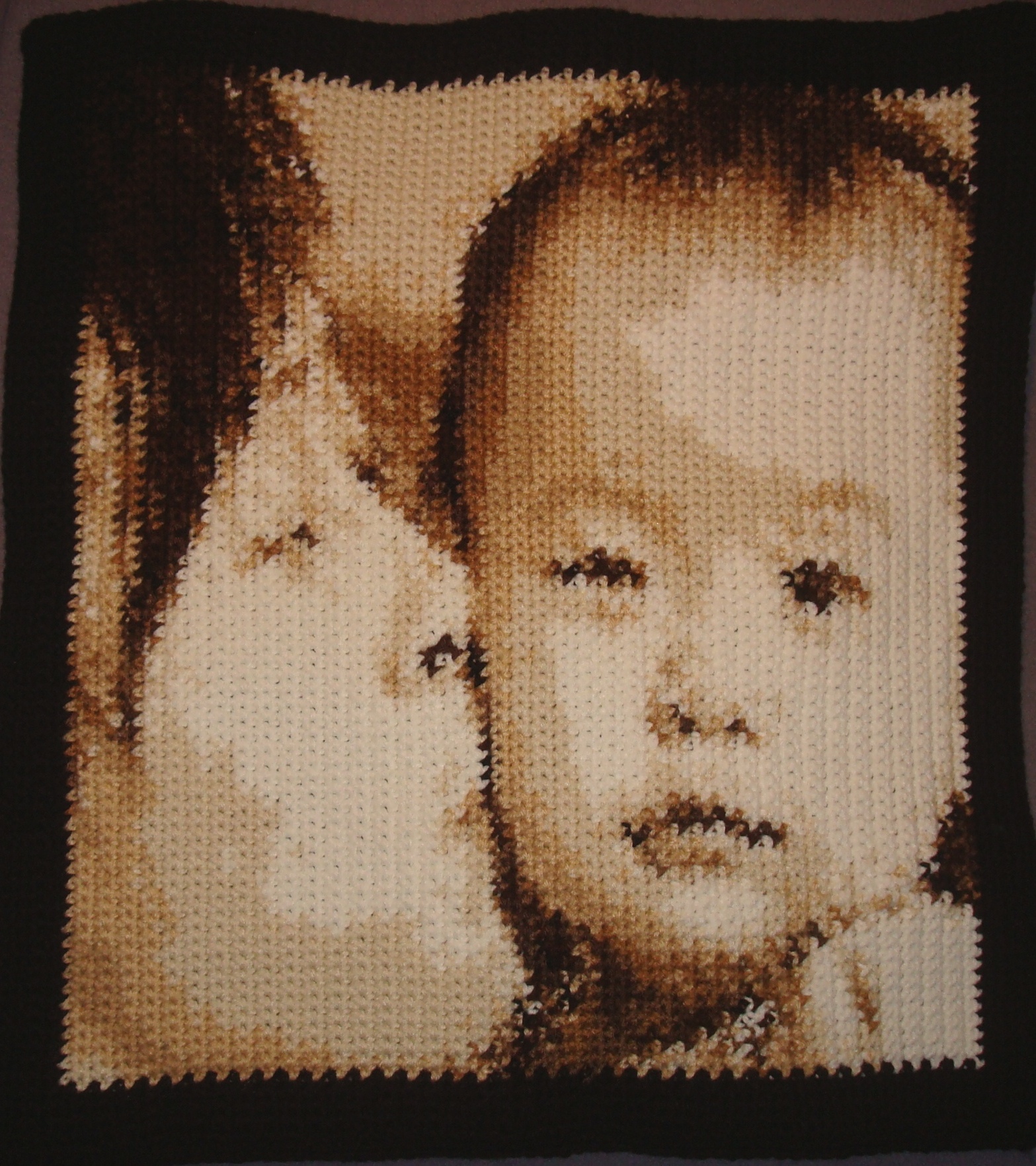This post contains affiliate links. Read my Disclosure Policy for more information. Thanks for your support!

In 2007, for a period of six months, I was swept up in a condition I can only describe as Felter Madness. I felted crocheted and knitted purses, pouches, and cozies galore. And I accomplished all of this felting in an old but dependable, top loading washing machine.
The fever finally left me after Christmas of that year, and I went on to crochet like a normal person.
My Return to Felting Without the Madness
Felting came back on the scene recently when I acquired my first smart phone (yes, I know, I’m way behind the times but quickly catching up). I like the idea of my electronic devices safe and secure in a sturdy, felted bag or cozy, but wasn’t sure felting would work in the front loading washing machine I now have.
I’ve also felted by hand in the sink, and while it’s way too much work for me, it’s definitely an option if you’re looking for a certain felted look.
As I was searching for information on front loading machine felting, I came across a blog post that offered “dryer felting” as a third option. Now you’re talking my language. It sounded easy and quick, so of course, I had to give it a try.
Here are some tips to get you started, using all three methods if you’ve never felted before.
Basic Felting Ingredients

To do any kind of felting, you’ll need these ingredients:
- Your project, crocheted or knitted in some kind of 100% animal fiber. I’ve only felted with wool, so I don’t know how other animal fibers (e.g., alpaca, angora) felt. If you’re knitting, use two strands of worsted weight wool for purses, as knitted stitches have less volume than crochet stitches. Use a single strand of yarn with the single crochet stitch. With taller stitches like half double crochet and taller, two strands of yarn might work better. My “go to” yarn for felting is Cascade 220. Plymouth Galway, the yarn I used for the knitted pouch and camera case below, is also good for felting.
- Hot water, as hot as you can get it.
- A teaspoon of mild detergent like Euculan or Woolite.
- A pillowcase to put your project in. You’ll lose some fibers in the felting process, and you don’t want them to clog your drain or dryer lint screen.
- Some towels or old jeans to increase agitation against the fabric.
- A sink (and extra bowl), washing machine (and tea kettle), or dryer, depending on which method you’ve chosen.
A Word About Shrinkage
Your piece is going to shrink when you felt it. So it’s a good idea to crochet a large swatch, at least 4” by 4”. Measure the length and width; then felt it, using one of the methods below.
Measure it again after it has dried to determine how much shrinkage occurred. Then you’ll know how much wider and longer your piece needs to be before you felt it. Be aware that knitted items shrink a lot more than crocheted items.
Now let’s take a look at how to felt, using each method.
Hand Felting

If you want a lightly felted look, and your project is a small one, try felting by hand in the sink. By lightly felted, I mean you can still see the individual stitches in your fabric after the piece has been felted.
- Fill the sink with water as hot as your hands can stand. I wore rubber dish washing gloves to minimize the heat; they helped a little.
- Add a teaspoon of mild detergent.
- Put your piece in the water and start swishing it around. You want to agitate the fiber as much as possible so they start locking together. When the water got too hot to the touch, I used wooden spoons to swirl the cozy around in the water.
- Have a bowl of cold water on hand to occasionally dip you piece into. Then put it back in the hot water (you made need to add more) and start agitating again. Cold water is supposed to speed up the felting process.
- Keep swishing in hot water for several minutes and dipping in cold every so often until the piece has the felted look you want.
- After the last cold water dip, gently squeeze out excess water; then wrap in a towel and press lightly to remove as much water as possible.
- Finger block your piece into shape. You can also stuff it with towels or stretch it over a bowl or other object so it will dry in that shape.
- Put the piece on a flat surface, out of direct sunlight, to dry. It will take several days to dry completely.
Felting by hand can take anywhere from 30 minutes to an hour, depending on how much you want the fabric to felt.
Washing-Machine Felting

Top Loader
Felting in a top loading washing machine is pretty straight forward, and you don’t need a lot of water to work with.
- Fill the machine with hot water, on the lowest water setting, and add a teaspoon of detergent.
- Put your piece in a pillow case and then in the machine , along with some old jeans or towels, and start the wash cycle. Put it on the longest cycle to make sure you give your piece enough time to felt.
- Check every 10 minutes or so to see how much the piece has felted. Add more hot water if it starts to cool from opening and closing the lid; I had a tea kettle full of hot water handy so I could add some after checking the progress of the felting.
- Once your piece has felted sufficiently, remove it BEFORE the spin cycle and dip it in some cold water.
- Gently squeeze out excess water, enfold in a towel to remove more water.
- Follow the directions above to dry.
Felting in a top loader is a lot faster than hand felting, not to mention you don’t scald your hands in the process. Total felting time for me is typically around 18 to 20 minutes to get the look I want (i.e., as little stitch definition as possible).
Front Loader

Honestly, I’ve never felted in a front loading washing machine, although several people have assured me it can be done. From what I’ve read, the process is the same as felting in a top loader.
One drawback to using a front loader is when you can’t stop it in mid cycle to check on felting progress or to remove it before the spin cycle.
If you have to let your piece go through the spin cycle and it has felted to your liking, try re-soaking it and gently squeezing and toweling out the excess water. Then finger block any creases out and into the desired shape for drying Finally, there’s also no agitator in the tub, so adding towels and/or old jeans is a must.
If you try or have used this method, let me know in the comments below how it worked for you.
Dryer Felting

What can I say? I am in love with dryer felting!! It is so easy to do and pretty quick, although it took me longer than it should have because I didn’t know how hot the dryer should be (it should be on the hottest setting). It’s a great alternative to felting in a washing machine.
After you’ve finished crocheting your piece:
- Submerge it in cold water to thoroughly soak the fabric. You don’t want to submerge it for too long because the dye will start to run, and you don’t want a faded out looking piece after it felts.
- Remove your piece from the water and gently squeeze to remove excess water. No need to wrap it in a towel to remove more water because it’s going to dry out in the dryer.
- Put your piece in a pillow case and add it to the dryer along with a wet towel or two.
- Run your dryer at the hottest setting, checking every 10 minutes or so on the progress of the felting.
- If the fabric dries out before it has sufficiently felted, re-soak it and put it back in the dryer.
- Remove the piece from the dryer when it has felted to your satisfaction.
With this process, there’s no drying after felting because you used the dryer to felt it! But I re-soaked my purse after it finished felting and removed the excess water. I wanted to finger block it into shape, and it has to be wet to do that. It took about three days to dry completely.
Dryer felting is WAY easier than felting in a washing machine in my humble opinion, whether it’s a top or front loader. You don’t have to go digging through the tub of water to find your piece to check on felting progress. And if you’re uncomfortable felting in a front loader like I was, then dryer felting is definitely a viable option.
Mari Webber’s Felted Crochet Clutch
My pattern tester for this purse (now called my Felted Crochet Clutch), Mari Webber of Cali Crochet, provided these pre- and post-felted dimensions of her dryer-felted clutch. She’s not sure what kind of wool she used, as it came from her stash. She thinks it may be some kind of Fisherman’s wool.
Her pre-felted dimensions are slightly smaller than the pattern dimensions, which means that, after felting, she ended up with a clutch that’s smaller than the pattern clutch.
But she’s very happy with the end product. Here’s what she had to say about the dryer felting process.
“I really enjoyed learning this felting process and I just love how the purse looks felted. I love how the yarn fibers fuse together, and it changes from regular crochet into this thick felt-like fabric. I was so surprised at how strong and durable it felt! No pun intended! Thanks for the opportunity to test your pattern.”
You can find the free pattern for the clutch HERE.
For more information on felting in a front loading washing machine, check out this blog post.
Which felting method do you prefer?







14 comments On 3 Ways to Felt Your Crochet (and Knit) Projects
Pingback: Wednesday Round Up ~ Felted Crochet | Jessie At Home ()
Pingback: Free Pattern: Dryer Felted Crochet Clutch | Yarn Over, Pull Through ()
Great tips! I have yet to be brave enough to try to felt something – I’ll have to remember this 🙂
Thanks Nancy!! Felting is fun. You could experiment with swatches of different stitches to see which effect you like before doing a big project. Good luck!
Pingback: Can't Find the Crochet Pattern You're Looking for? | Yarn Over, Pull Through ()
I have never tried felting before, but have always been curious about it. Great tutorial!
I would love for you to share it at the Fiber Tuesday link party that I am guest hosting. http://www.ouicrochet.com/2015/06/fiber-tuesday-guest-hosting-link-party.html
Hi Susie, I’m glad you found the blog post helpful. Yes, I’ll share it in your link party today.
What a fantastic blog post! Very informative and well written. Very interesting read!
Thanks Janie!
So happy that you linked up with us! I’d love for you to join us again!
Thanks!
Susie
My pleasure Susie.
Hi Patrice! This is the BEST tutorial I have seen! Thank you so much! I lived in Hawai’i for 3-1/2 years on the windward side of the Big Island. I miss it terribly. Would have loved to have met you and learned from you. Mahalo!
Hi Judi, I’m so glad you found the tutorial helpful! I’m on the windward side of Oahu, and believe it or not, have yet to visit the Big Island, after being here for 10 years. I have a friend moving there, so I definitely plan to visit her. If you ever come back, hit me up with a message or email so we can hook up. Aloha!
Pingback: Freda Felted Messenger Bag – Free Pattern – MotherBunch Crochet ()
Sliding Sidebar
Categories
Privacy Overview